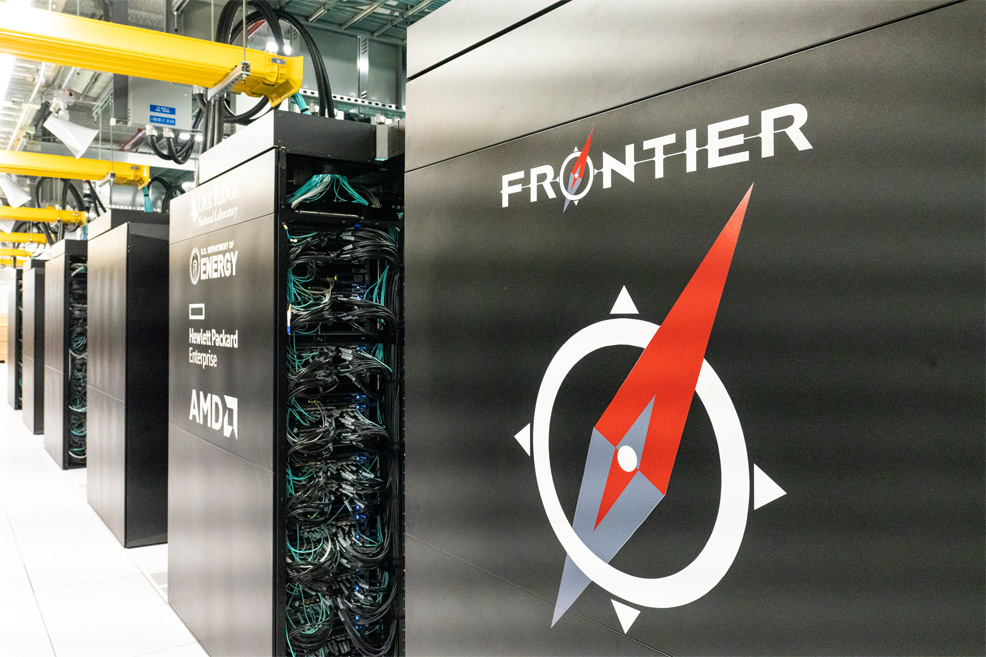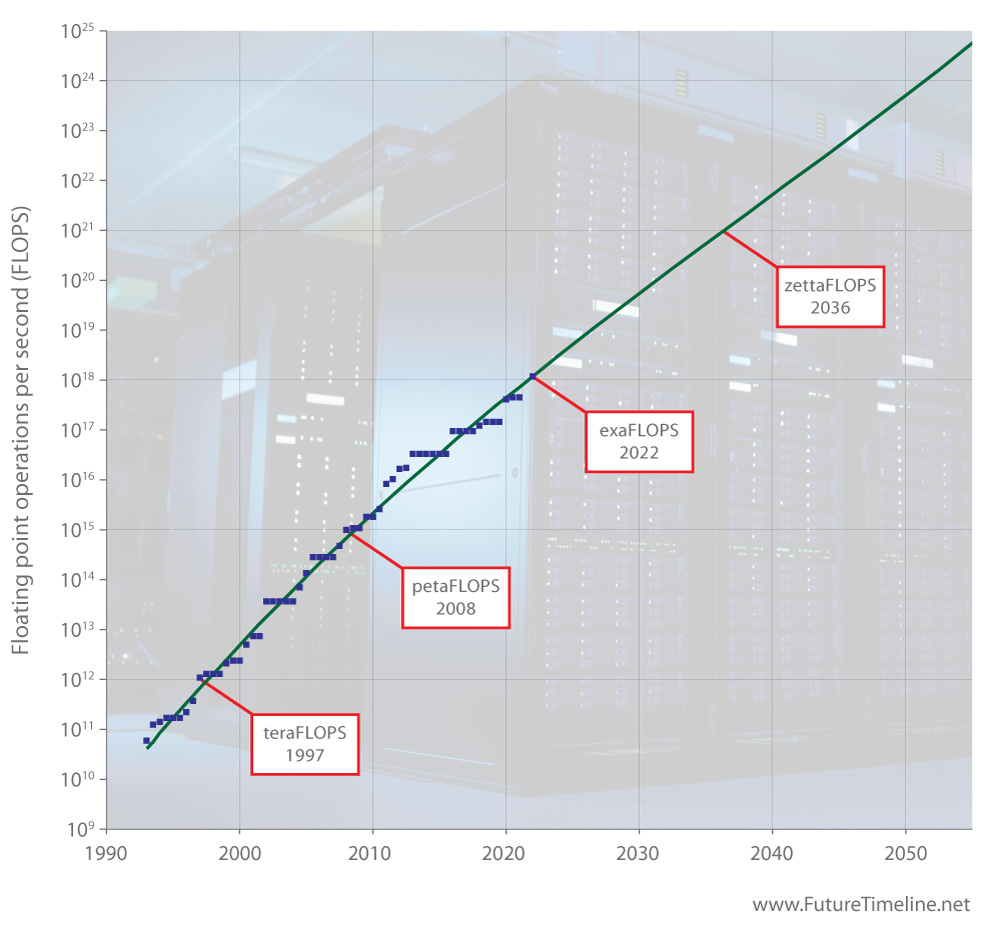
30th May 2022 World's first exascale supercomputer is officially confirmed In a major milestone for computing, Oak Ridge National Laboratory today announced that Frontier has achieved 1.1 exaFLOPS.
Frontier, built by Oak Ridge National Laboratory (ORNL) in Tennessee, USA, today earned the number one spot on the TOP500 list, a twice-yearly ranking of all the fastest known supercomputers in the world. It becomes the first machine to reach the long-awaited exascale – a quintillion calculations per second. Its performance – measured at 1.102 exaFLOPS – is 2.5 times that of the previous record holder, Japan's Fugaku, which held the title for two years. It has a theoretical peak performance of 2 exaFLOPS, according to ORNL, making it 10 times more powerful than the laboratory's earlier machine, Summit. To put Frontier's capabilities into perspective – if all 7.9 billion people in the world each completed one calculation per second, it would take more than four years to do what an exascale computer can do in one second. "Frontier is ushering in a new era of exascale computing to solve the world's biggest scientific challenges," said Thomas Zacharia, ORNL Director. "This milestone offers just a preview of Frontier's unmatched capability as a tool for scientific discovery. It is the result of more than a decade of collaboration among the national laboratories, academia and private industry, including the Department of Energy's (DOE's) Exascale Computing Project, which is deploying the applications, software technologies, hardware and integration necessary to ensure impact at the exascale."
Frontier also claimed the number one spot on the Green500 list, which rates energy use and efficiency, with 62.68 gigaFLOPS of performance per watt (GFlops/watt) – significantly better than the next best machine, which had 51.63 GFlops/watt. Frontier achieved yet another top spot in the newer category of mixed-precision computing, which is based on formats commonly used for artificial intelligence, with a performance of 6.88 exaFLOPS. "When researchers gain access to the fully operational Frontier system later this year, it will mark the culmination of work that began over three years ago involving hundreds of talented people across the Department of Energy and our industry partners at HPE and AMD," said Jeff Nichols, ORNL Associate Lab Director for computing and computational sciences. "Scientists and engineers from around the world will put these extraordinary computing speeds to work to solve some of the most challenging questions of our era, and many will begin their exploration on Day One." Exascale computing (1,000,000,000,000,000,000 calculations per second) follows the earlier petascale, first achieved in 2008. Zettascale computing will be the next of these milestones. If the trend is maintained, we can expect that to arrive by 2036. Beyond that is the yottascale, and then the brontoscale, which could take us into Singularity territory as computers will then be a billion times faster than today.
Comments »
If you enjoyed this article, please consider sharing it:
|








